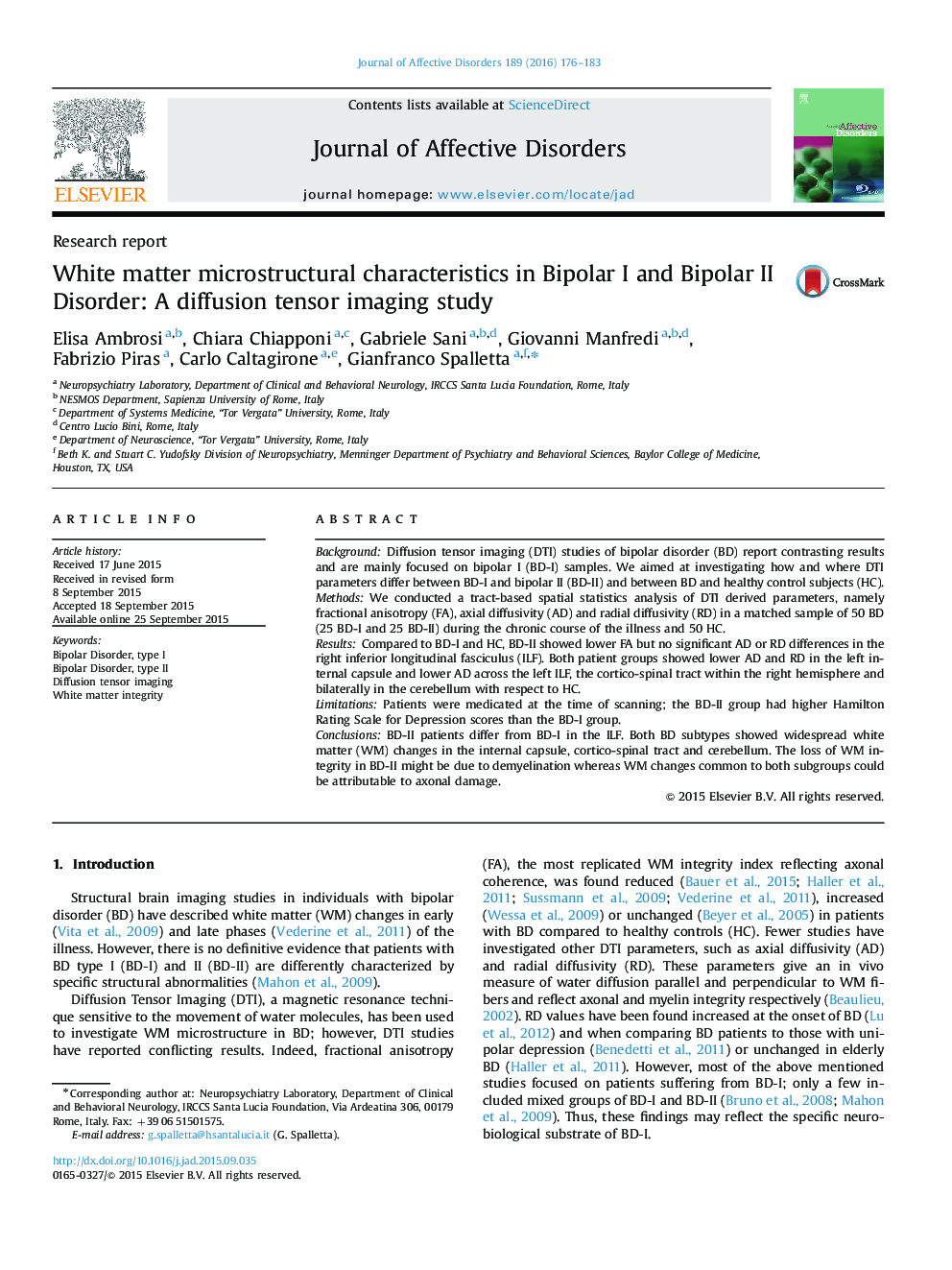| Article ID | Journal | Published Year | Pages | File Type |
|---|---|---|---|---|
| 6230867 | Journal of Affective Disorders | 2016 | 8 Pages |
â¢DTI studies of Bipolar Disorder have mainly focused on Bipolar Disorder, type I.â¢We investigated microstructural WM abnormalities in Bipolar Disorder type I and II.â¢Bipolar Disorder subtypes had both overlapping and distinct WM abnormalities.â¢The loss of integrity of WM could be due to axonal damage.
BackgroundDiffusion tensor imaging (DTI) studies of bipolar disorder (BD) report contrasting results and are mainly focused on bipolar I (BD-I) samples. We aimed at investigating how and where DTI parameters differ between BD-I and bipolar II (BD-II) and between BD and healthy control subjects (HC).MethodsWe conducted a tract-based spatial statistics analysis of DTI derived parameters, namely fractional anisotropy (FA), axial diffusivity (AD) and radial diffusivity (RD) in a matched sample of 50 BD (25 BD-I and 25 BD-II) during the chronic course of the illness and 50 HC.ResultsCompared to BD-I and HC, BD-II showed lower FA but no significant AD or RD differences in the right inferior longitudinal fasciculus (ILF). Both patient groups showed lower AD and RD in the left internal capsule and lower AD across the left ILF, the cortico-spinal tract within the right hemisphere and bilaterally in the cerebellum with respect to HC.LimitationsPatients were medicated at the time of scanning; the BD-II group had higher Hamilton Rating Scale for Depression scores than the BD-I group.ConclusionsBD-II patients differ from BD-I in the ILF. Both BD subtypes showed widespread white matter (WM) changes in the internal capsule, cortico-spinal tract and cerebellum. The loss of WM integrity in BD-II might be due to demyelination whereas WM changes common to both subgroups could be attributable to axonal damage.
